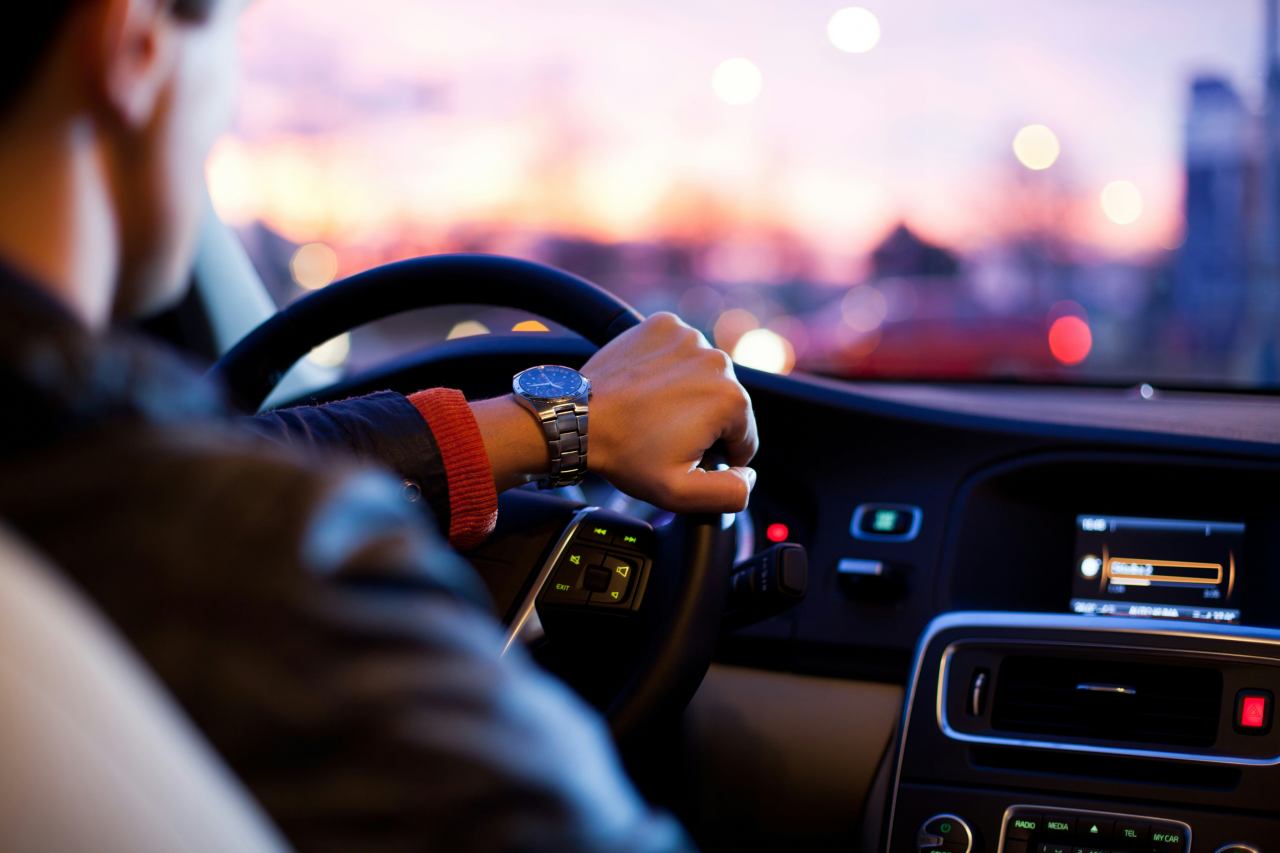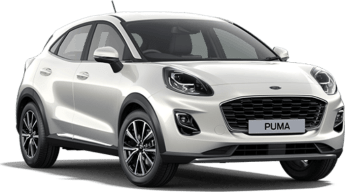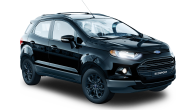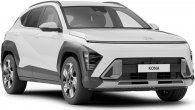Ford’s new Puma is more than just a quaint little SUV with a cool big-cat name. It’s part of a renewed push by the blue oval to be seen as more than just the Ranger and Mustang brand.
If there’s any type of car that can help Ford along in its mission, it’s a light SUV. The segment is booming with sales as buyers shun hatchbacks, and there’s seemingly a new nameplate popping up every month.
Does the Puma have what it takes to keep up? We’ve grabbed a mid-spec ST-Line for a week to find out.
Ford Puma 2021: ST-Line
| Engine Type | Turbo 3, 1.0L |
|---|---|
| Fuel Type | Premium Unleaded Petrol |
| Fuel Efficiency | 5.3L/100km (combined) |
| Seating | 5 |
| Price From | $21,230 - $26,840 |
| Safety Rating |
|
Is there anything interesting about its design? 8/10
Is there anything not interesting about the Puma’s design? It gets Ford’s swoopy, grille-heavy, design language out of Europe and pours in extra fun factor.

It’s hard not be charmed by this car’s big smiling face, its light clusters which ride up the bonnet as part of its contoured fenders help to give it a very defined front three-quarter that stands apart from the crowd.
These lines run down this car’s stout sides and into its coupe-like roofline. The rear is rounded out by a strong spoiler which references the brand’s other performance products, cool LED light clusters, and trendy text across the bootlid.
The ST-Line separates itself from the base car with more interesting filler panels and two-tone alloy wheels, even if they are the same size.
You could call the design 'risky', especially compared to some of its more conservative rivals, but one of the benefits of all these new light SUV nameplates popping up is the lack of a design rulebook for them. They all seem to have a bit of a different take, giving this class of SUV an unusually broad selection of personality and the Puma is no exception.

On to the inside, and the Puma’s fun exterior promise isn’t really matched with much flair. The upright dash and tight dimensions are mostly monotone in their approach, although this ST-Line brings a bit of fake carbon trim in line with its sporty badge.
The design and plastics are all pretty average, though, with the standout features including the spongey flat-bottomed steering wheel and the multimedia screen. Ford’s 'Sync' software looks good and operates well.

The digital dash cluster helps this car not feel as plain as the base model on the inside, but would it hurt to ask for one with a faster frame rate? It’s not very reassuring to see the simulated analog dials have to skip a few frames every now and again…

The ST-Line also gets its own seat trim, which offers a more interesting design and better bolstering than the base car.
Does it represent good value for the price? What features does it come with? 7/10
The Puma is far from the most affordable SUV in this new sub-class. At the lower end of the spectrum you’ve got options like the Hyundai Venue, while further up the scale you start to get into more all-wheel drive offerings like high-end Mazda CX-3s or hybrid Toyota Yaris Crosses.
This mid-grade ST-Line wears a before-on-road cost (MSRP) of $32,340, although with our car’s options (which we'll get to in a minute) the as-tested price jumps to $36,490.

The Puma range is front-wheel drive only, but even at this relatively tall price, the spec offering is everything consumers could really expect.
Standard spec includes, 17-inch alloy wheels, LED headlights, an ST-Line bodykit, an 8.0-inch multimedia touchscreen (with wired Apple CarPlay and Android Auto connectivity), a wireless phone charging bay, a 12.3-inch digital instrument cluster, paddle-shifters, a leather-trimmed, flat-bottom steering wheel, alloy pedals, and sports seats.

One of the big-ticket items for the ST-Line is that it goes beyond a body-kit in offering a distinct and sportier suspension tune over its base equivalent, an unusual addition for a light SUV.
Our car was optioned with a pricey panoramic sunroof ($2000) and the premium ‘Desert Island Blue’ paint will set you back an additional $650 (totally worth it).
Oddly, the ST-Line scores push-start ignition but doesn’t pair it with keyless entry. It seems like a small complaint, but it’s one tiny feature that really adds a lot to everyday practicality, not having to get the key out of your pocket when wrangling shopping or kids or pets.
How practical is the space inside? 7/10
Light SUVs are generally pretty small on the inside as most are based on small hatchbacks. In the Puma’s case it’s based on – and for our market, replaces – the Ford Fiesta range.
This little SUV wears some of its small car flaws on its sleeve, though, and that’s evident as soon as you jump in.

The interior feels a little claustrophobic thanks to the proximity of items like the multimedia screen and A-pillars that make it feel tall but narrow and closed-in.
The ST-Line seats are a notable upgrade in terms of comfort from the base car but are still far from the best in the segment.
Adjustability is okay, but thankfully there are soft-touch finishes on the doorcards and centre console box, making the cockpit a relatively comfortable place for front occupants.
There is a large bottle holder and trench in the front door cards, a tiny slot where the wireless phone charger is kept under the climate unit, two decent bottle holders between the front seats, and a centre console box with a narrow but deep storage area inside.
Connectivity-wise there is a single USB-A port jutting out of the transmission console (seems susceptible to debris clogging it up), as well as a covered 12V outlet, and there is a single USB-C port hidden in the centre console box.
The back seat is a little tight to get into thanks to the descending roofline, and rear seat room is a bit tight for me behind my own seating position (I’m 182cm/6'0" tall).

The seat trim offers decent comfort levels in the rear, and those soft-touch finishes continue to the rear doors. Headroom is okay, but if you were any taller than me you might have issues, especially with that panoramic sunroof fitted.
There is a single bottle holder in the rear doors for medium-sized bottles, and some flimsy nets on the backs of the front seats.
Boot space is pretty good for the class at 410 litres, about what you might expect from a hatchback, for example.
In this segment the new Kia Stonic is a bit bigger, while something like Mazda’s CX-3 comes in with a fair bit less space.
The Puma has a variable-height load floor, allowing the space to either be smaller with a flush finish to the rather high boot lip, or you can make full use of the space, but you’ll need to reach over the lip to load items in and take them out.
Either way a space-saver spare resides underneath. To boost practicality further, you can option the powered tailgate, available on the top-spec ST-Line V, for a reasonable $750.
What are the key stats for the engine and transmission? 8/10
The Puma is powered by a new 1.0-litre, three-cylinder, turbocharged petrol engine. This is part of a new breed of small-capacity turbo engines which offer healthy outputs with supposedly better fuel economy and power delivery.
Outputs are 92kW/170Nm which seem decent but not stellar for the segment, although that peak torque can be accessed from just 1500rpm, making for great responsiveness.
This engine is mated to a seven-speed dual-clutch automatic transmission in typical European fashion. The Puma range is front-wheel drive only.
How much fuel does it consume? 7/10
The Puma has an official/combined fuel consumption number of 5.3L/100km which is not bad when you consider many rivals have older non-turbo engines with higher sticker claims.

After a mostly urban driving week our car produced a slightly less impressive 7.7L/100km figure, a little above this car’s official urban number of 6.3L/100km.
The Puma requires mid-grade 95RON unleaded fuel and has a 42-litre fuel tank.
Warranty & Safety Rating
What safety equipment is fitted? What safety rating? 8/10
In terms of contemporary active safety equipment, the Puma scores well, but it can score even better with a certain option pack fitted.
Standard equipment includes auto emergency braking with pedestrian detection, lane keep assist with lane departure warning, traffic sign recognition, and an emergency SOS function.
Upgrading to the oddly named ‘Park Pack’ ups that suite to include adaptive cruise control and blind spot monitoring, alongside front parking sensors. It comes at a cost of $1500 and is arguably worth it if you’re already shelling out in the mid-thirty grand region for this little SUV.
All Pumas have six airbags alongside the expected traction, brake, and stability controls, and carry a maximum five-star ANCAP safety rating to the 2019 standard.
What does it cost to own? What warranty is offered? 7/10
The Puma is covered by Ford’s competitive five year and unlimited kilometre warranty promise which is up to spec with most of its rivals.
You’ll need to service the Puma once every 12 months or 15,000km, and the first four services have a capped price at $299. The fifth service jumps to $320 and it does get a little more expensive from there.

The service calculator goes out to 12 years and while it’s not the cheapest car to maintain, you can definitely do worse.
Ford has made an effort to make the service experience a little more palatable, too, with such boons as a bookable free loan vehicle, or a pick-up and drop-off service. The brand tops up each year of roadside assist as you service, too.
What's it like to drive around town? 8/10
At first the Puma’s high-riding attributes work against it. The seating position feels elevated which leaves you peering over the front axle in what feels like a bit of an awkward arrangement.
Spend a little time driving though, and not only will you get used to its quirks, this car has an unlikely charm that will win you over.
It starts with the steering. It’s super direct, even twitchy, and while that can be unsettling at first, you start to realise how organic it makes this little car feel to direct.

It encourages you to sling it into corners in quite the same way that Ford’s hot hatches do, a rare characteristic for any light SUV, and it’s nice to see some of that Ford performance DNA in there somewhere.
Boosting the confidence from behind the wheel, too, is the level of grip on offer. We were all surprised in a recent comparison test by just how well the base Puma dealt with uneven roads and corners, and the ST-Line manages to take that planted feeling a step further with its bespoke sportier suspension tune.
On the downside this means the ST-Line doesn’t offer quite the same comfort as the base-spec, and that extra sharpness in the ride might not be for everyone. That said, it’s still far more forgiving than, say, the Mazda CX-3.
The three-cylinder turbo engine is responsive, and even mated to that dual-clutch transmission doesn't hamper city driving with the kinds of laggy, glitchy moments turbo dual-clutch combinations can create.
While still not perfect, I was impressed with its behaviour in stop-start traffic, and once you’re up and running it’s easy to appreciate the benefit of the short, precise shifts of a DCT.
The little engine even sounds pretty good under load with a gruff uneven note, and again one that proved more pleasant than rivals in the aforementioned comparison test.
Ultimately, the ride height and tall seating position do prevent the Puma from having as much of a low-down and connected hatch-like feel as some rivals like the CX-3, Kamiq, or even the new Kia Stonic.
However. I’d say the trade-off for a more engaging steering, suspension, and engine tune is well worth it for those seeking a bit of excitement in their daily commutes.
Verdict
To escape being just the Ranger and Mustang brand, Ford really needs to get its offerings in other segments right. Even with little room for error, I think the brand has done a great job on the Puma.
While it’s not the most affordable, efficient, or practical light SUV, it presents decent value for the kit you get and great flexibility with its available options. Where the ST-Line really stands out from the pack though is how much fun it is behind the wheel. It’s a rare attribute for a light SUV, and one I think will win over buyers who are after a car like this but still seek an engaging drive experience.
Pricing Guides
































.jpg)
.jpg)
.jpg)







.png)









.jpg)
.png)
.jpg)

.jpg)



.jpg)
.jpg)

Comments